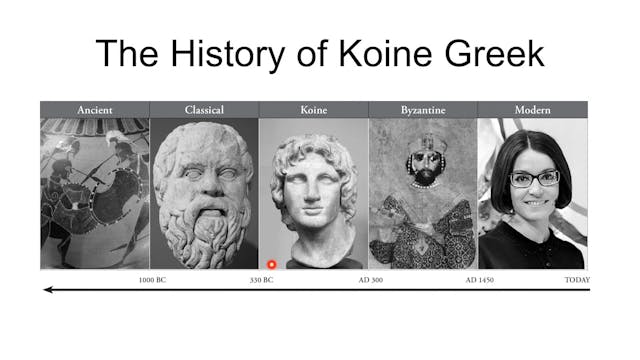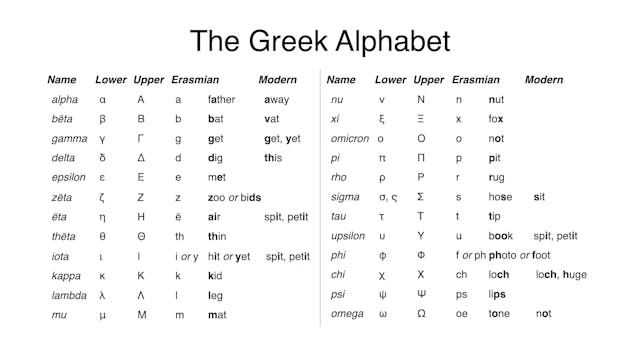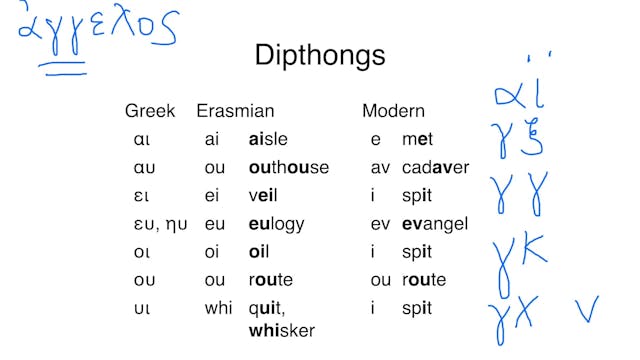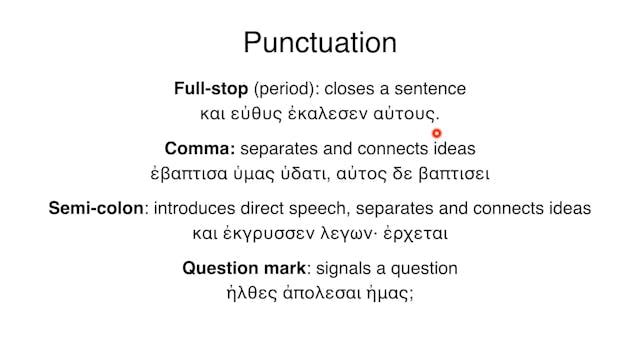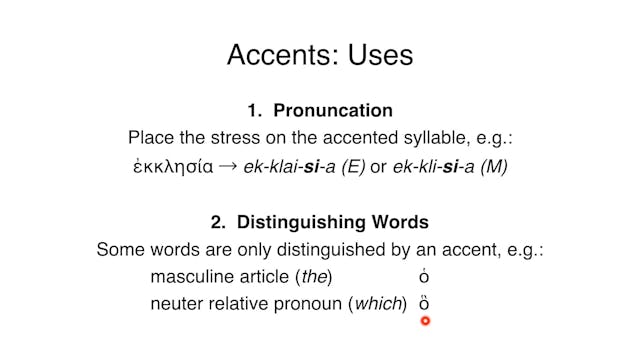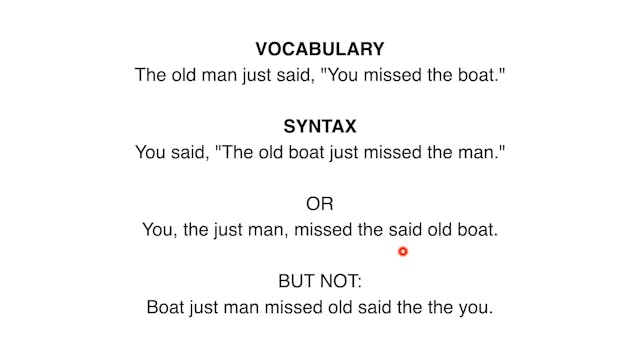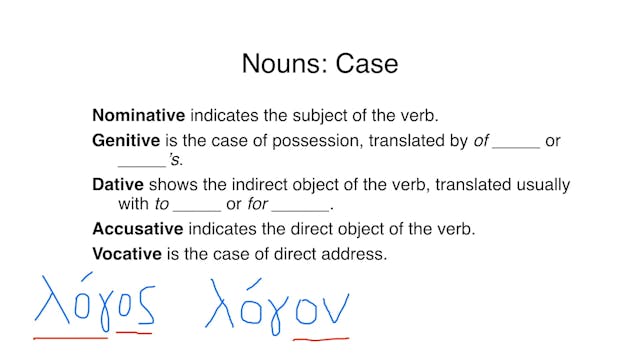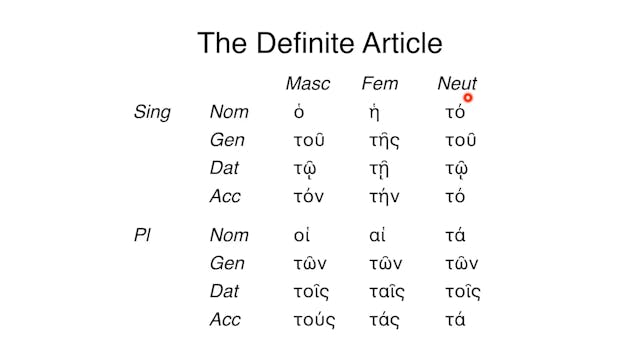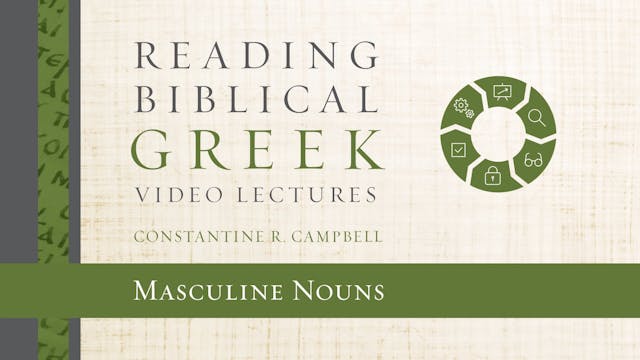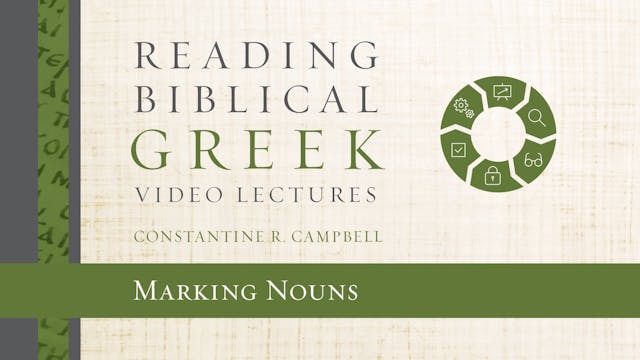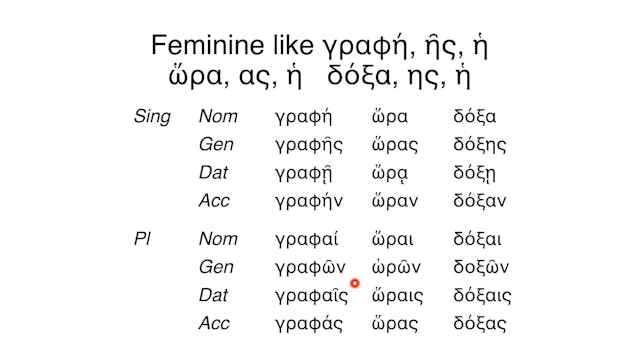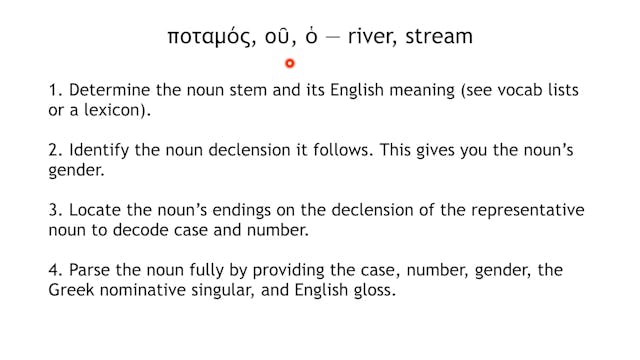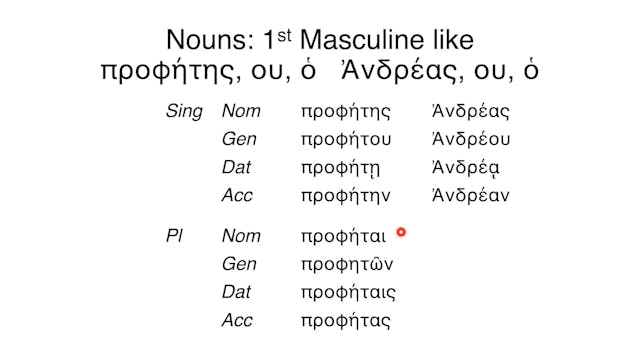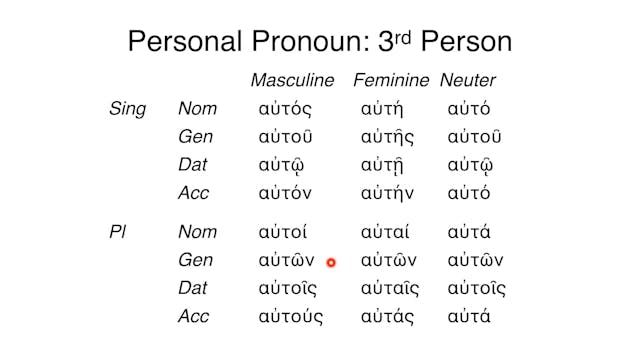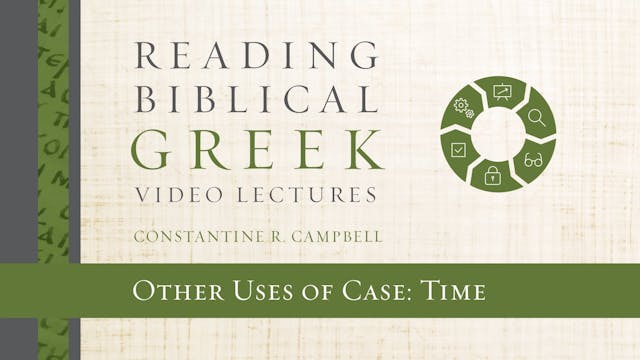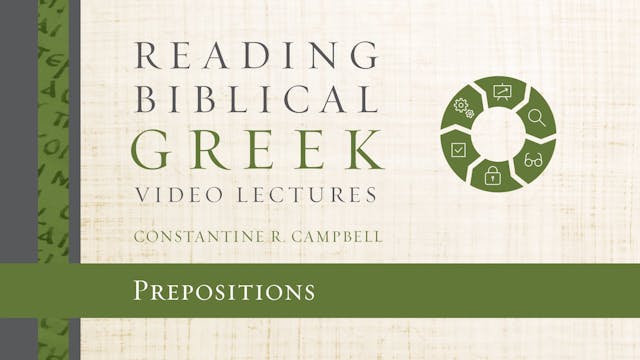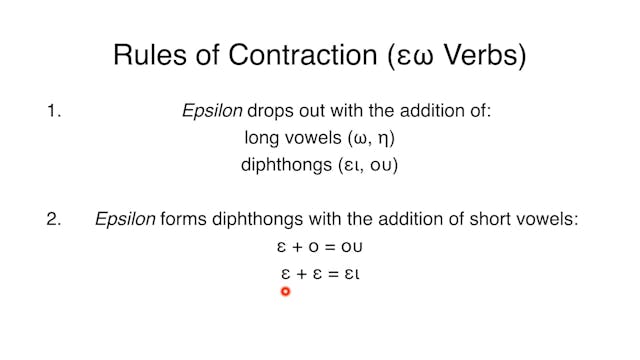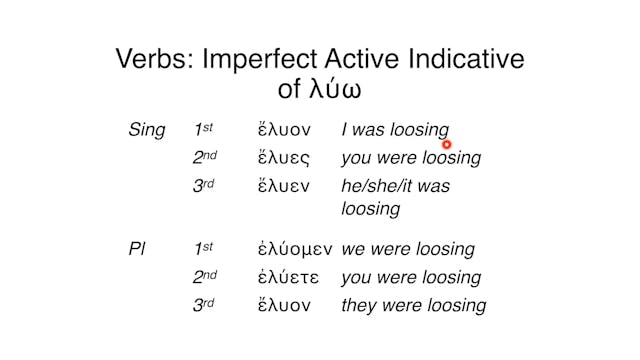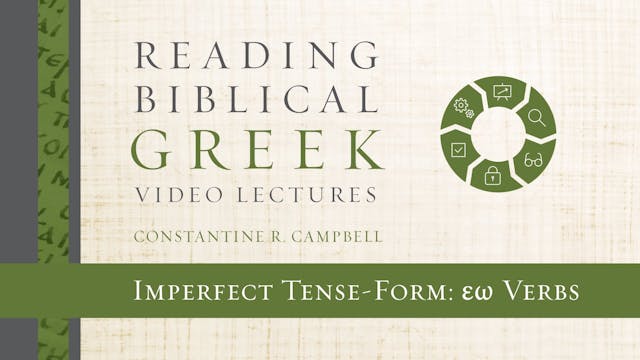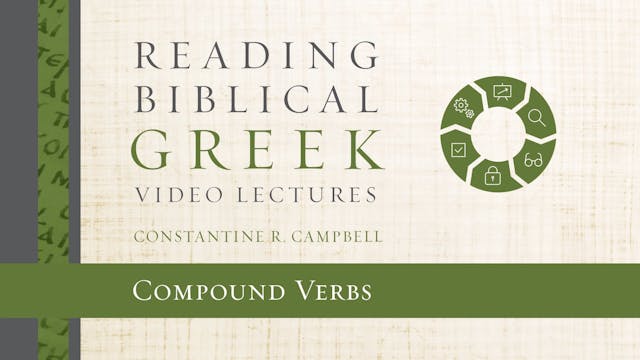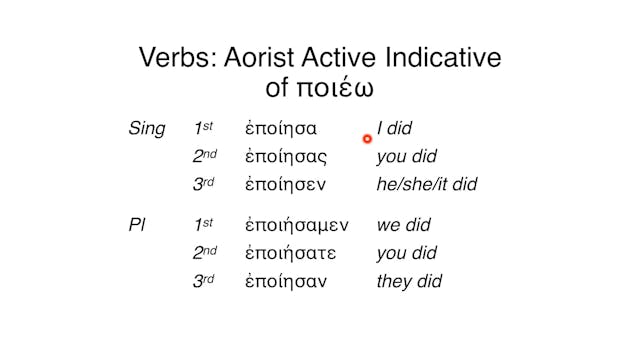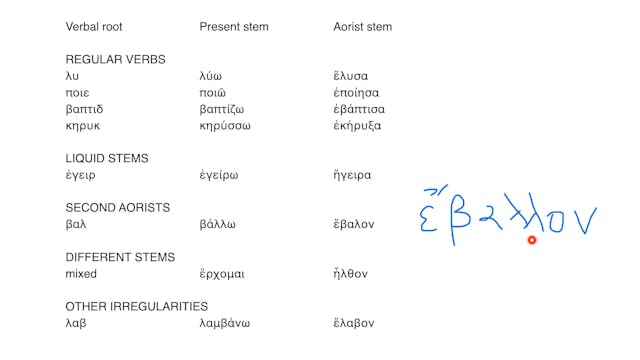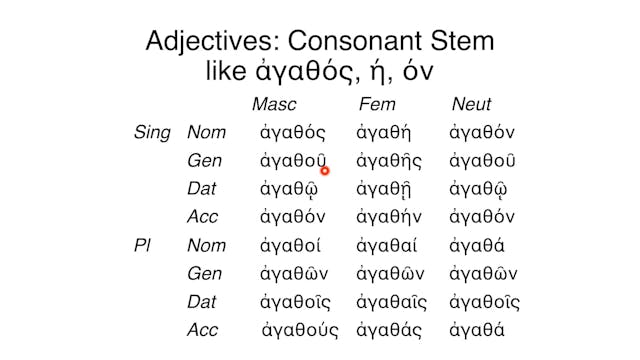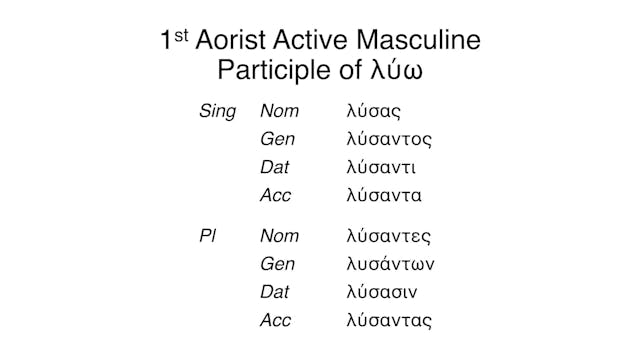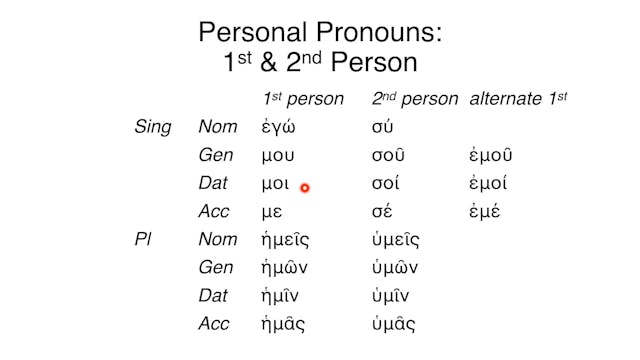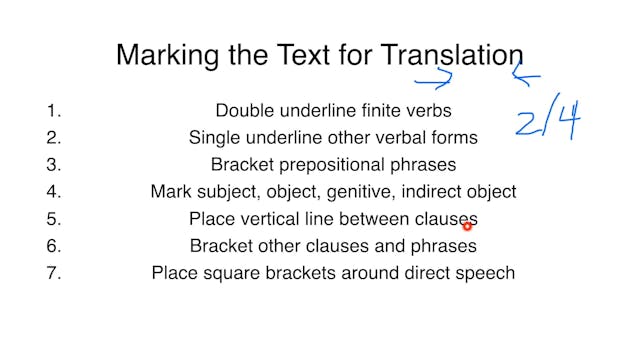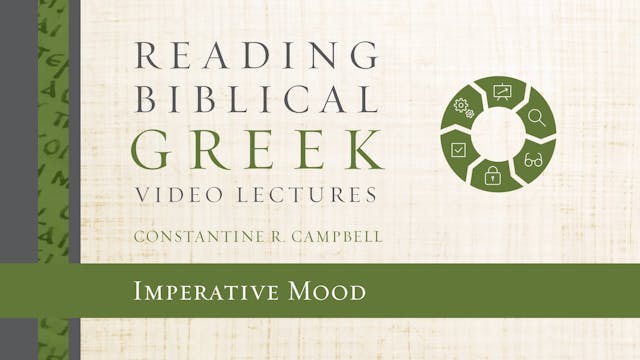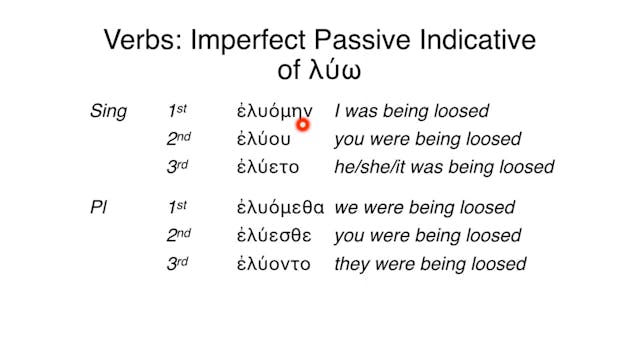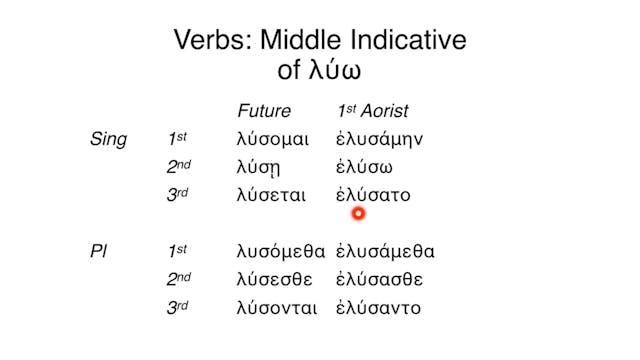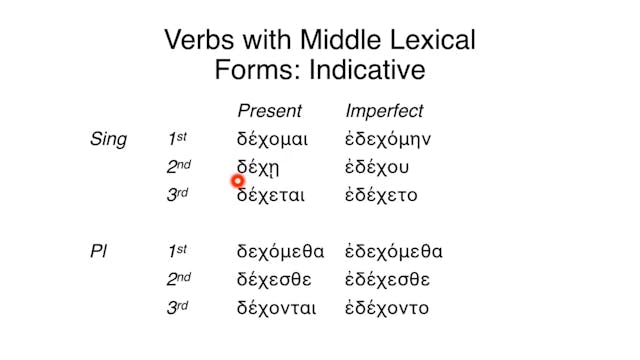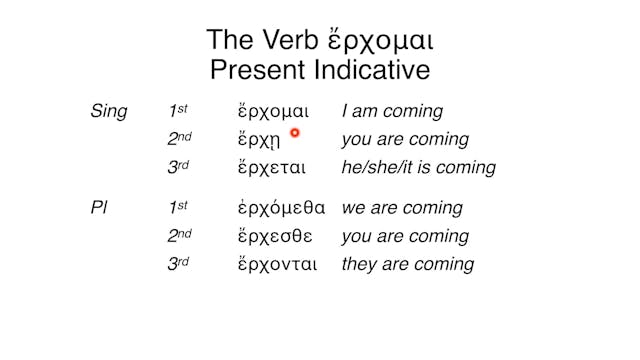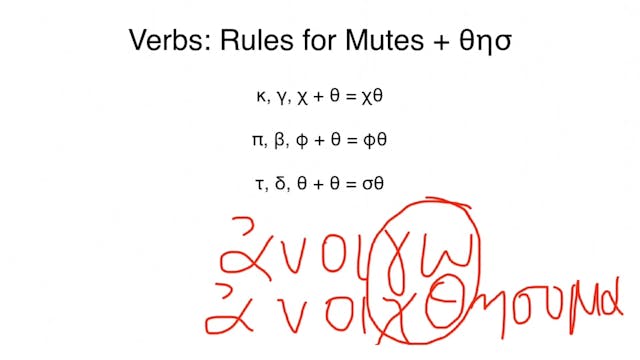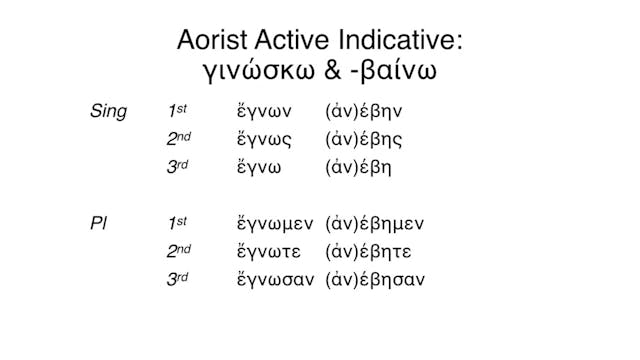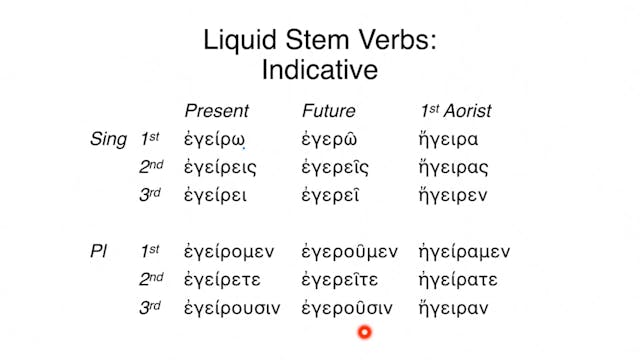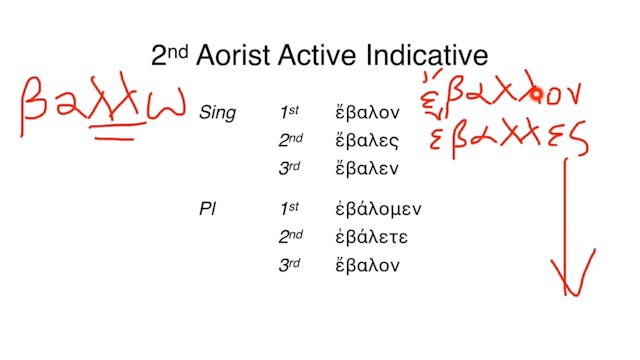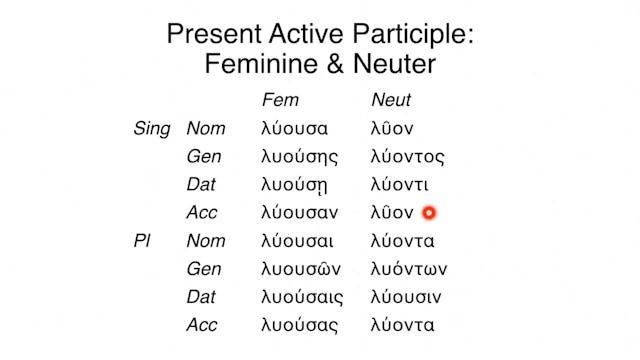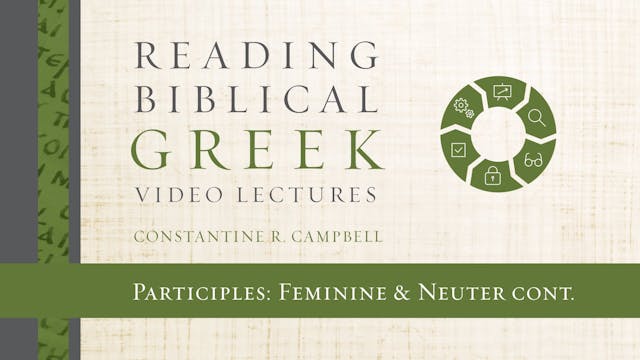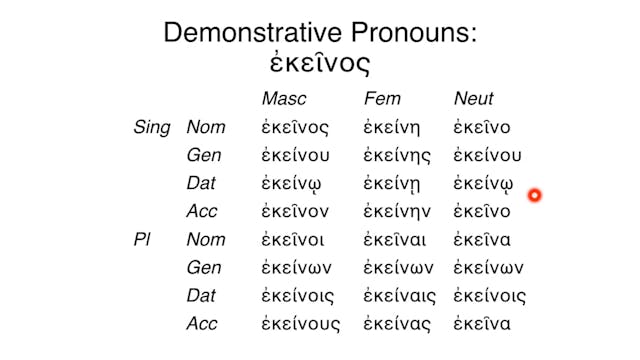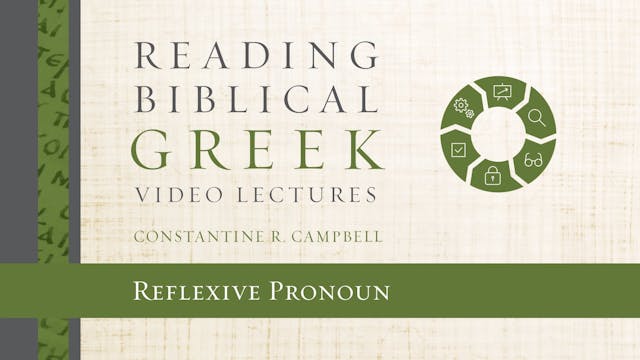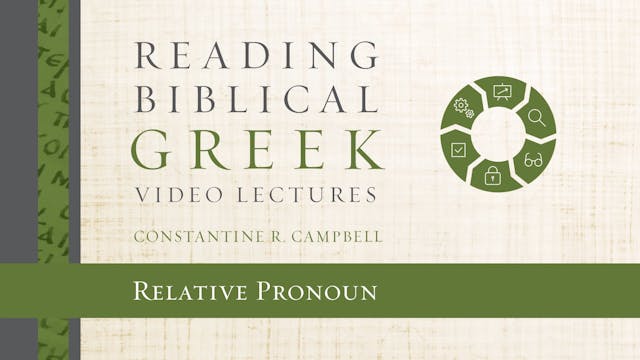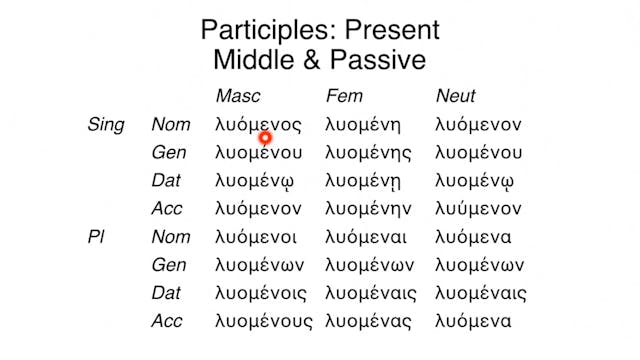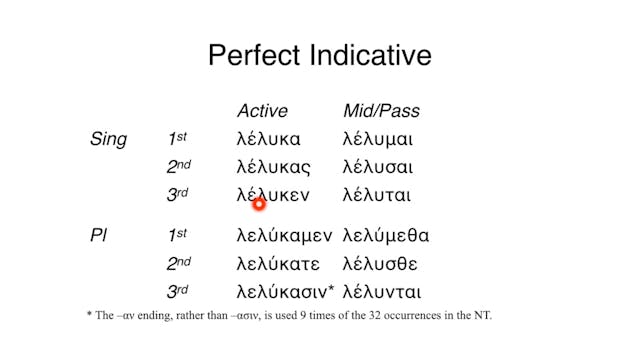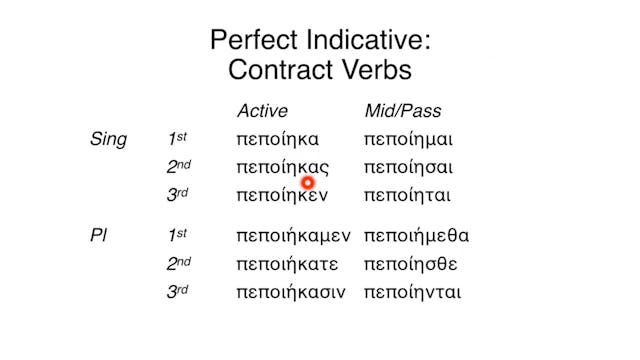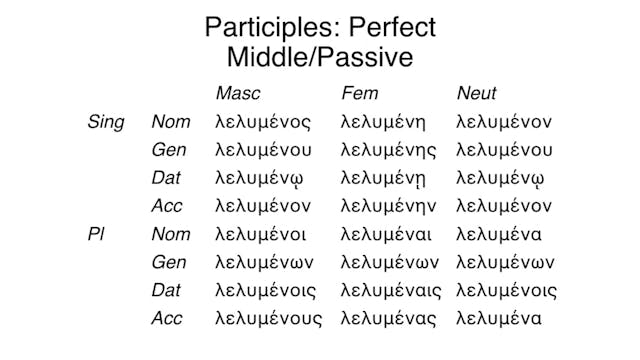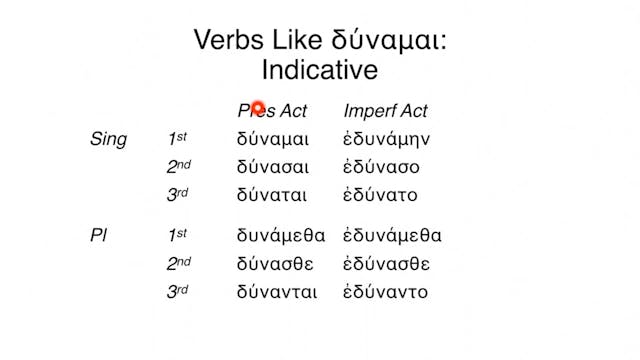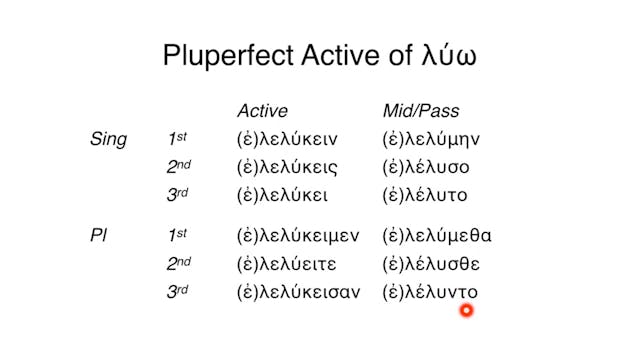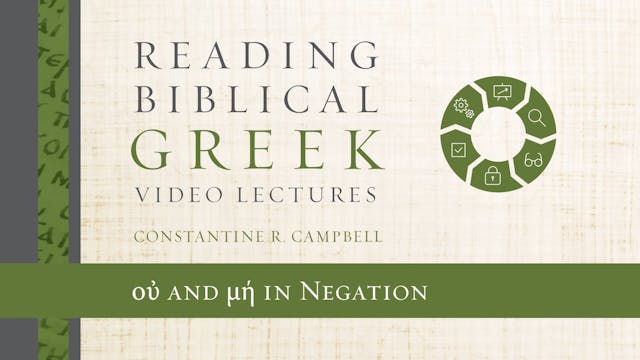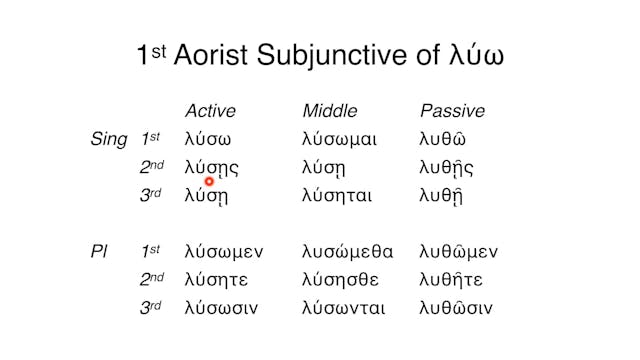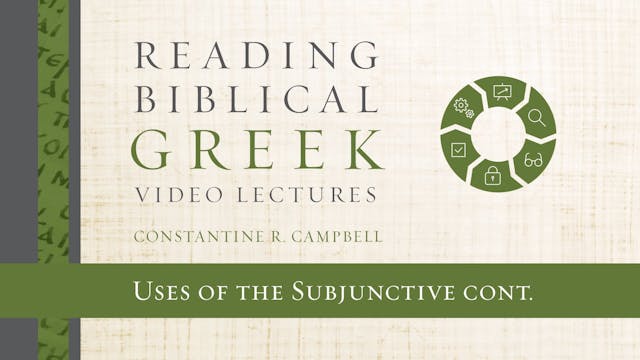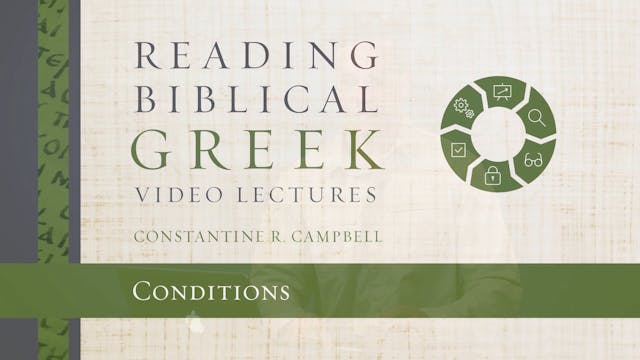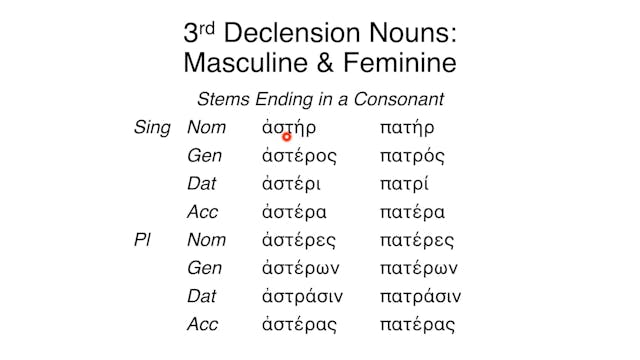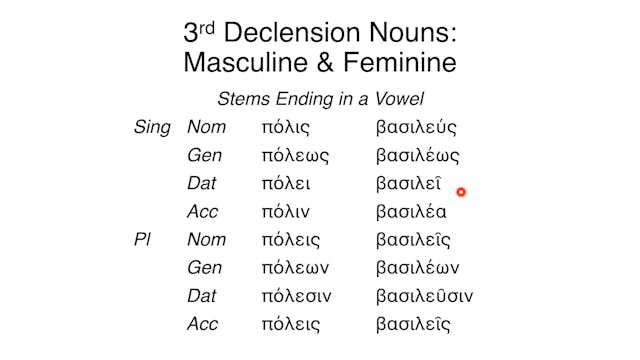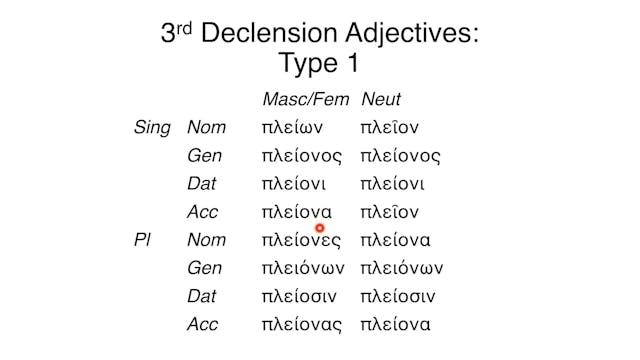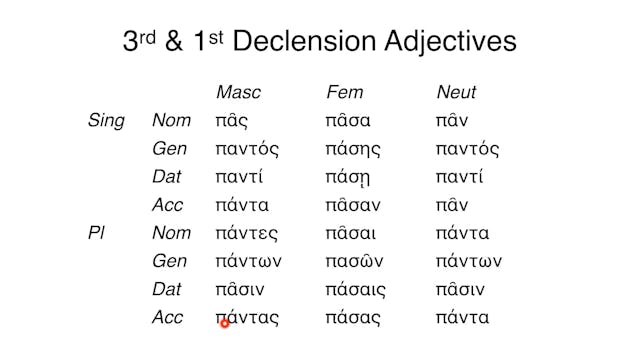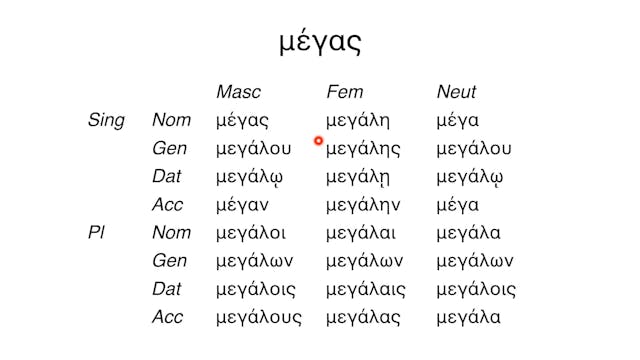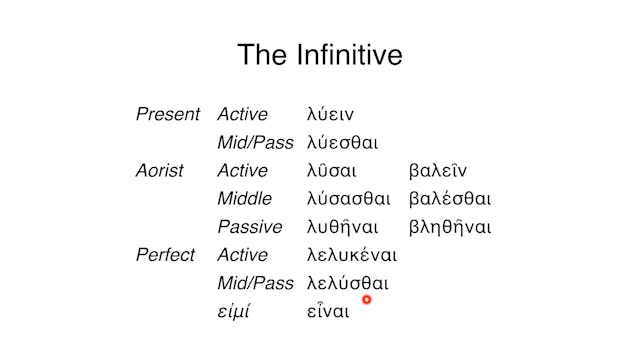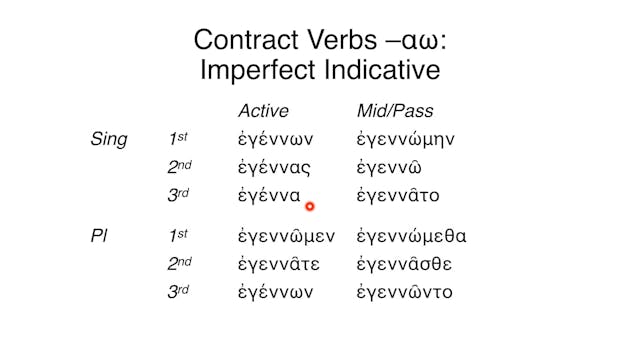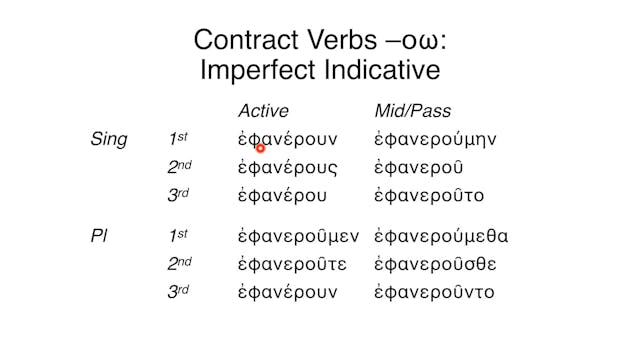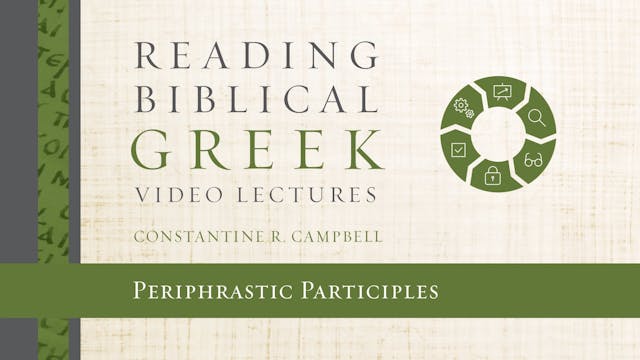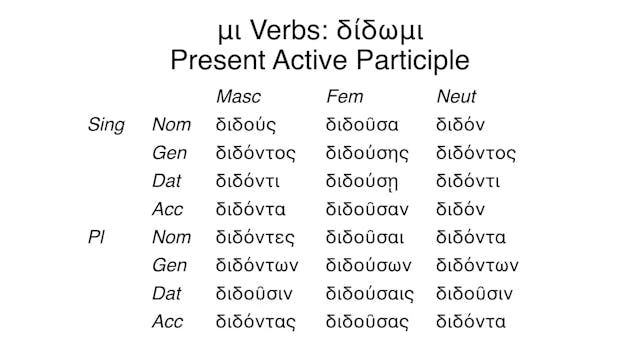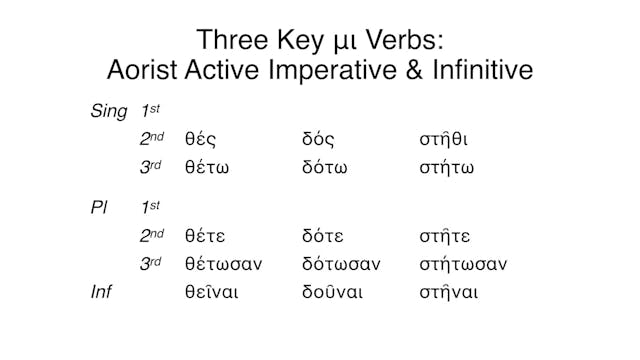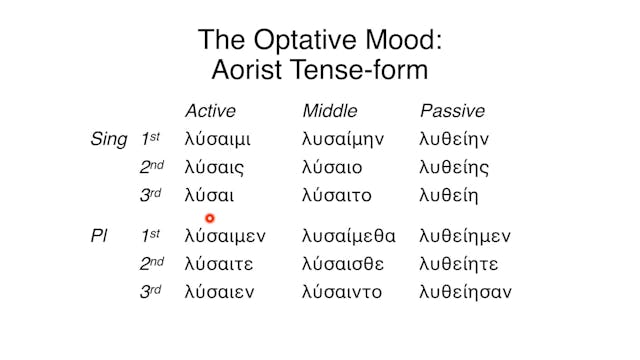Reading Biblical Greek
Watch this series as part of a FREE trial to MasterLectures.
Based on Reading Biblical Greek written by Richard J. Gibson and Constantine R. Campbell, this series is designed around three core elements: grammar, vocabulary, and reading and translation. It introduces you to the essential information you need to optimize your grasp of the fundamentals of biblical Greek—no more and no less—and help you read and translate the Greek of the New Testament as soon as possible.
The learning approach in the Reading Biblical Greek course revolves around three core elements: grammar, vocabulary, and reading and translation.
• Grammar. The grammar consists of micro-lessons, which break up information in small, digestible chunks. Each micro-lesson addresses a single point. This arrangement makes for easy comprehension and review. New learning is incremental and recursive—each new piece builds on and reinforces prior learning.
• Vocabulary. As an essential complement to grammar, vocabulary is introduced at strategic points and is arranged first by what you have been learning in grammar, and then by frequency.
• Reading and Translation. The goal of this series is to enable students to read and translate the Greek of the New Testament. Thus, the content is structured and tied to a specific Greek text to enable reading as soon as possible. The student will have read and translated the whole of Mark 1–4 by the end of the series.
While Reading Biblical Greek only introduces you to information that is essential to grasp the fundamentals of the Greek language, it is informed by the latest and best of Greek and linguistic scholarship, enabling you to move seamlessly into further study.
By watching this series, you will gain:
• familiarity with the basic rules of New Testament Greek grammar
• a basic grasp of beginning-level Greek vocabulary
• experience in applying grammar and vocabulary lessons to actual translation
-
Reading Biblical Greek - Session 1 - Our Approach to Learning
-
Reading Biblical Greek - Session 2 - History of Koine Greek
-
Reading Biblical Greek - Session 3 - Signs and Symbols
-
Reading Biblical Greek - Session 4 - Alphabet
-
Reading Biblical Greek - Session 5 - Vowels and Consonants
-
Reading Biblical Greek - Session 6 - Letter Combinations
-
Reading Biblical Greek - Session 7 - Other Sounds and Symbols
-
Reading Biblical Greek - Session 8 - Accents
-
Reading Biblical Greek - Session 9 - Earliest Manuscripts
-
Reading Biblical Greek - Session 10 - Understanding Meaning
-
Reading Biblical Greek - Session 11 - Parts of Speech
-
Reading Biblical Greek - Session 12 - Relating Words in Clauses
-
Reading Biblical Greek - Session 13 - Nouns
-
Reading Biblical Greek - Session 14 - The Article
-
Reading Biblical Greek - Session 15 - Masculine Nouns
-
Reading Biblical Greek - Session 16 - Marking Nouns
-
Reading Biblical Greek - Session 17 - The Way Words Mean
-
Reading Biblical Greek - Session 18 - Feminine Nouns
-
Reading Biblical Greek - Session 19 - Analyzing Nouns
-
Reading Biblical Greek - Session 20 - Neuter Nouns
-
Reading Biblical Greek - Session 21 - 1st Declension Masculine Nouns
-
Reading Biblical Greek - Session 22 - Memorizing Vocabulary and Paradigms
-
Reading Biblical Greek - Session 23 - Personal Pronouns: 3rd Person
-
Reading Biblical Greek - Session 24 - Other Uses of Case: Time
-
Reading Biblical Greek - Session 25 - Prepositions
-
Reading Biblical Greek - Session 26 - An Introduction to Verbs
-
Reading Biblical Greek - Session 27 - Characteristics of the Verb
-
Reading Biblical Greek - Session 28 - Verbs Ending in ω, Like λύω
-
Reading Biblical Greek - Session 29 - Contract Verbs Ending in εω
-
Reading Biblical Greek - Session 30 - Analyzing Verbs
-
Reading Biblical Greek - Session 31 - Verbal Aspect
-
Reading Biblical Greek - Session 32 - Imperfect Tense-Form
-
Reading Biblical Greek - Session 33 - Imperfect Tense-Form: εω Verbs
-
Reading Biblical Greek - Session 34 - Compound Verbs
-
Reading Biblical Greek - Session 35 - εἰμί, The Verb I Am (To Be)
-
Reading Biblical Greek - Session 36 - First Aorist Tense-Form
-
Reading Biblical Greek - Session 37 - Verb Roots and Stems
-
Reading Biblical Greek - Session 40A - Participles
-
Reading Biblical Greek - Session 39 - Adjectives
-
Reading Biblical Greek - Session 40B - Participles continued
-
Reading Biblical Greek - Session 41 - Personal Pronouns: 1st and 2nd Person
-
Reading Biblical Greek - Session 42A - Marking the Text for Translation
-
Reading Biblical Greek - Session 42B - Translating Greek into English
-
Reading Biblical Greek - Session 43 - Conjunctions
-
Reading Biblical Greek - Session 44 - Charting the Syntax of a Passage
-
Reading Biblical Greek - Session 45 - Imperative Mood
-
Reading Biblical Greek - Session 46 - Passive Voice
-
Reading Biblical Greek - Session 47 - Middle Voice
-
Reading Biblical Greek - Session 48 - Verbs with Middle Lexical Forms
-
Reading Biblical Greek - Session 49 - The Verb ἔρχομαι
-
Reading Biblical Greek - Session 50 - Future Tense-Form: Middle and Passive
-
Reading Biblical Greek - Session 51 - Aorist Passive
-
Reading Biblical Greek - Session 52 - Liquid Stem Verbs
-
Reading Biblical Greek - Session 53A - 2nd Aorist Tense-Form
-
Reading Biblical Greek - Session 53B - 2nd Aorist Tense-Form: Outside the Indicative
-
Reading Biblical Greek - Session 54A - Participles: Feminine and Neuter
-
Reading Biblical Greek - Session 54B - Participles: Feminine and Neuter continued
-
Reading Biblical Greek - Session 55 - Demonstrative Pronouns
-
Reading Biblical Greek - Session 56A - Adjective Positions and Special Uses of αὐτός
-
Reading Biblical Greek - Session 56B - Words That “Take” the Predicative Position
-
Reading Biblical Greek - Session 57 - Reflexive Pronoun
-
Reading Biblical Greek - Session 58 - Relative Pronoun
-
Reading Biblical Greek - Session 59 - Participles: Middle and Passive Voices
-
Reading Biblical Greek - Session 60A - Perfect Tense-Form: Indicative Mood
-
Reading Biblical Greek - Session 60B - Perfect Tense-Form: Indicative Mood continued
-
Reading Biblical Greek - Session 61 - Perfect Non-Indicative
-
Reading Biblical Greek - Session 62 - Verbs Like δύναμαι
-
Reading Biblical Greek - Session 63 - Pluperfect Tense-Form
-
Reading Biblical Greek - Session 64 - οὐ and μή in Negation
-
Reading Biblical Greek - Session 65 - Subjunctive Mood
-
Reading Biblical Greek - Session 66A - Uses of the Subjunctive
-
Reading Biblical Greek - Session 66B - Uses of the Subjunctive continued
-
Reading Biblical Greek - Session 67A - Conditions
-
Reading Biblical Greek - Session 67B - Conditions continued
-
Reading Biblical Greek - Session 68 - Adverbs
-
Reading Biblical Greek - Session 69A - 3rd Declension Nouns: Masculine and Feminine
-
Reading Biblical Greek - Session 69B - 3rd Declension Nouns: Masculine and Feminine continued
-
Reading Biblical Greek - Session 70 - 3rd Declension Nouns: Neuter
-
Reading Biblical Greek - Session 71 - 3rd Declension Pronouns
-
Reading Biblical Greek - Session 72 - Adjectives of 3rd and 1st Declensions
-
Reading Biblical Greek - Session 73 - πολύς and μέγας
-
Reading Biblical Greek - Session 74 - The Infinitive
-
Reading Biblical Greek - Session 75 - Uses of the Infinitive
-
Reading Biblical Greek - Session 76 - Contract Verbs αω
-
Reading Biblical Greek - Session 77 - Contract Verbs οω
-
Reading Biblical Greek - Session 78A - Pragmatics of Participles
-
Reading Biblical Greek - Session 78B - Pragmatics of Participles continued
-
Reading Biblical Greek - Session 79 - Periphrastic Participles
-
Reading Biblical Greek - Session 80A - Three Key μι Verbs (ε, ο, α): Indicative and Participle
-
Reading Biblical Greek - Session 80B - Three Key μι Verbs (ε, ο, α): Other Moods, Aorist Forms
-
Reading Biblical Greek - Session 81 - Other μι Verbs
-
Reading Biblical Greek - Session 82 - The μὲν . . . δέ Construction
-
Reading Biblical Greek - Session 83 - The Optative Mood



